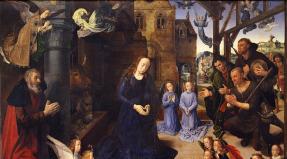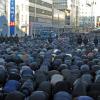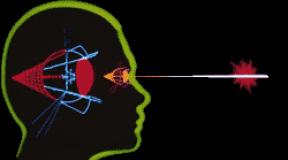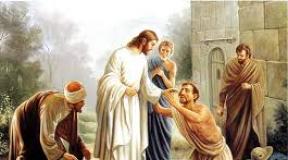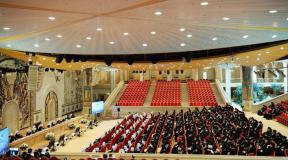An alien kills a person. James Cameron: "Aliens just want to survive, like us"
How Ridley Scott killed the Alien.
On May 18, a new part of the story about one of the most famous and terrifying space monsters was released. This, of course, is about the Alien. We have already watched the film and compared it with the previous series of the franchise, we tell you.
To begin with, a little history, after all, "Alien" has a rich past.
1979: Ridley Scott gave us a sci-fi horror

It all started 38 years ago.
In May 1979, the world saw one of the most terrifying monsters in movies. The alien creature from the movie "Alien" is rightfully one of the most cruel and deadly aliens that the heroes of the films have encountered. Invented by the artist Hans Giger the creature terrified the audience: quick and sharp, with acid instead of blood, a protruding second jaw and an absolutely insane way of birth. The perfect killing machine.
Atmospheric, fear-stirring "Alien" has become a "classic" of fantastic horror movies.
1986: James Cameron gave us a luxury action movie

Seven years later, the brilliant James Cameron filmed a sequel to the film, called "Aliens". It was completely different in its atmosphere from its predecessor, but at the same time fans of the original took the film with a bang. A rare occurrence in cinematography. Cameron made an exciting action movie, expanded the universe (we first saw alien queen), saturated the film with charismatic characters and action-packed for its time.
It was the perfect sequel. Cameron demonstrated for the first time that the continuation of the story could be even better than the original. The film looks cool today.
1992: David Fincher gave us a controversial thriller

Alien 3, filmed in 1992, disappointed the audience. This was not surprising. The film was “born” in agony: for a long time they could not approve the final script, some of the set designs were eventually not useful, the studio abandoned the developments of Hans Giger. It got to the point that director David Fincher did not have a relationship with the producers, and he left the project ahead of schedule. Eventually picture montage lasted about a year (!).
The story turned out to be too dark. An absolute sense of hopelessness, a viscous atmosphere, and a lack of a happy ending upset fans of the series. The director focused on the psychological component of the film, the audience craved for more dynamics and were upset by the death of the characters from the previous film.
1997: Jean-Pierre Jeunet gave us the absurd

After the death of the main character in the ending of the third part (sorry for the spoiler!), At first glance, the story has exhausted itself and no continuation is required. But the sense of greed of Hollywood producers was not exhausted. This is how Alien: Resurrection was born in 1997. French director Jean-Pierre Jeunet tried to make the most of an absolutely weak and slightly delusional script.
In addition to a variety of strangers and spectacular scene in the water, the picture was not much remembered and practically put an end to the further evolution of the franchise.
2012: Ridley Scott gave us hope

Five years ago, Ridley's grandfather Scott returned to the fantasy genre and showed the world the prequel to Alien. The film with the mythical name "Prometheus" promised to tell the story of the appearance of alien creatures. Where did they come from, who are their creators and all that. Didn't tell. A banal, predictable film with stupid characters and a dumb raw script. Anti-scientific, absurd, indistinct.
A good visual series with an empty filling, it would seem, finally buried "Alien". But no, this was not enough for Ridley Scott, we continued to believe that the famous series would receive a worthy continuation.
2017: Ridley Scott gave us a fake

Alien: Covenant "was supposed to directly link" Prometheus "with" Alien ". But instead, we got an Alien vs. Predator movie.
Script impotence

The idea itself and the philosophical subtext of the film look quite interesting, but the whole atmosphere and seriousness of the narrative is killed by the complete stupidity of the characters. In the second film in a row, the scriptwriters are sent on interstellar expeditions downright idiots. If at first you close your eyes to dementia of heroes - “well, ok, suppose they really thought that spacesuits were not needed here” or “well, ok, suppose one of the heroines is just hysterical and could not cope with her own emotions in a stressful situation.” Then by the middle of the film you realize that the characters do not behave like rams, and then you turn a blind eye to everything.
History is marking time on the bones of the past parts, practically without introducing anything new, stereotyped squares. The course of the picture is predictable and boring. Even the final twist you understand in advance, it does not touch, since there is no desire to worry about stupid characters.
Excellent acting with just one character

It is also impossible to empathize due to the short time devoted to each character, poorly written idiotic dialogues and indistinct acting. Absolutely cardboard nouns. Taken together, this all only causes irritation. Do astronauts really take such strange characters?
Against their background, all the mystery, motivation and cruelty of the main character of the film looks great and interesting. Even taking into account that this hero absolutely scores on the rules of robotics by Aizik Asimov. Game of one german actor is more terrifying than any of the xenomorphs in the film.
Boring action

Why did we love films about "Aliens"? For the tension and harsh atmosphere of what is happening. Forget it. Sitting in the spectator's chair, you just wonder at the character's recklessness and watch his boring predictable murder. Ridley Scott does almost the entire film self-copying. Not a single fresh idea. Not a single memorable and truly scary moment. And this is with an R rating (18+). There is a lot of blood, but not scary.
I wanted to justify the film with a deep philosophical message from Ridley Scott. But no. This is not an art movie, we were expecting a space horror, but got a fake with reflections on higher beings with quotes by Byron and the ruthless extermination of a squad of the most feeble-minded characters in the world.
We loved the suspense of the 1979 movie, adored the story of the foot soldiers in '86, feared the corridors of the prison in '92, and still remember the steep firefight from Resurrection in '97.
We will not want to remember 2017. Shame and shame. I would like to unsee all this. Ridley, don't do that anymore. Put your brainchild in the hands of another director. For example, Neil Blomkamp, \u200b\u200bwho shot at one time the brilliant "District 9" and wanted to shoot a direct sequel to the film by James Cameron. We need fresh blood. And "Alien" too.
For the transmission of heritage - genetic and cultural. So hereditary self-replicants, be they genes or memes, "figure out" which ones will survive and take over all the resources.
Murder is a manifestation of the influence of heritage on a person. For a very long time, we have evolved in a harsh wild environment, in which the legacy that we have now survived -
genetic: aggression, suspicion, friendliness, fear of loneliness and a bunch of other things, laziness and the need for activity and work, domination and submission, and so on and so forth ...
culturally: nuuuuuu, loyalty, ingenuity, coolness, position in society, a bunch of institutions and so on. The culture is very different.
These legacies survived in those conditions. Now the conditions are different. Now you need to live in a large community, be able to learn quickly and a lot, make connections, solve new non-intuitive problems, and so on ... And so it turns out that both inadequate programs and adequate ones have got into new conditions + new ones also appear. And they all (or almost all) work. Those that ultimately provide more benefit, better spread and capture territories, and those that give harmful behavior (for example, too strong aggression to some irritant or EXCESSIVE cruelty and shortsightedness in making important economic and political decisions), in the end As a result, they spread worse - their work is a mistake, a misfire, a "breakdown", a harmful mutation.
It's unavoidable. Firstly, because of the accumulated heritage, which is not easy to modify, and secondly, because of mutations (be it a genetic disorder or an unusual view of the world). All programs work, they all compete with each other. Not surprisingly, there are murder programs. They are part of this process.
This is a general view. And in particular there are many reasons: in the majority - stupidity, impulsiveness, aggressiveness, lack of foresight, cruel calculation, instincts. Maybe something else can be added. But in the end, all this is manifestation, competition and selection (both artificial and natural, but globally still natural), among legacies.
I have two news for you:
The good news is that within societies, murders will gradually come to naught. Only those who are socially useful will remain, which will not be perceived negatively and, in essence, will not be considered murders.
The bad news is that we will kill people from other societies until they cease to be people, that is, until we go so far that we begin to perceive them as something else. Essentially like nonhumans, NOT US. A. Here comes another good news - they will cease to be people and they can be safely killed)
No matter how disgusting it all was. Excuse me. This is the dark side of evolution. It is not very pleasant to be her object, but this is our world.
One of Cameron's major additions to the Alien mythology is the Queen, a giant beast who pursues Ellen Ripley at the end of the film. Where did it come from?
“In insects - for example, ants or termites - an immature female, one of the first to be fertilized, grows to become a new queen, and the males become workers or soldiers. The queen determines the place for future clutches (the temperature of the heat exchanger at the station is ideal for incubating eggs) and takes a sitting position. The males look after her as her belly swells from the eggs filling it. Both drones and soldiers also procure building material to enlarge the nest, creating niches in it, in which they can stay themselves, while supplies food will not come to an end (ie, until the Queen uses all the colonists). This is the position in which the arriving paratroopers catch them. "
A question that has worried fans of the franchise for many years: why are Aliens killing some people, while others are selected for implantation?
"One admittedly confusing aspect of the beasts' behavior (and of" "as well) is how they decide the fate of their prey: sometimes the soldier grabs the victim to turn it into food for the Queen and her offspring, sometimes - just kills. For example, Corporal Ferro was immediately killed, while Tadpole and almost all the other colonists were turned into cocoons, attached to the walls and preparing them to become food for future droppings. If we assume that Aliens have intelligence, at least among those close to the Queen - then, it is possible that these decisions were tactically justified. Ferro posed a real threat, controlling the landing module, filled to capacity with weapons. The settlers were unarmed and practically helpless, therefore they were easy prey. "
Certainly Cameron did a great job of showing what Aliens are. But where did they come from?
In Ridley Scott's Alien, the Nostromo crew find a clutch of eggs in the ship's cabin, and in the center is a dead creature with a torn chest, sitting in the pilot's chair. He is considered to be a Space Jockey. Who is that?
"Obviously, this was a pilot in a single-seat ship, making a solo flight. Probably, in his homeland they knew about his disappearance, but they considered it senseless to conduct a search operation to rescue a congener doomed to death. Perhaps he was a volunteer or conscript who agreed to participate in a dangerous missions to bio-isolate these organisms. He could be a military pilot delivering eggs that served as a deadly biological weapon in some ancient interstellar war that humanity did not know about. While flying, he could be infected. "
How could a person who got on an abandoned alien ship and saw a dead alien not feel the mortal danger threatening him?
"Well, yes, Dallas, Kane and Lambert saw a dead alien and that didn't stop them. Human curiosity is a great power."
The action in "Aliens" takes place 57 years later, and all this time Ripley spent in hypersleep. How has she been able to cope with the advances in technology that have taken place over the years?
"First of all, ask yourself a question: can a smart and strong-willed person from 1930 learn the technologies of 1987 if he is given a few months to train? At that time they had cars (including traffic jams), guns and airplanes, a little In retrospect, who could have guessed the power of the impact computers and video have on our environment today? Technology may have reached its pinnacle or stabilized even before the Nostromo flight, and the changes were minor by Ripley's return. It doesn't bother Ridley or me. "
We disassemble the most dangerous monsters from the depths of space.
Gambling addiction https: //www.site/ https: //www.site/

Aliens, or xenomorphs, from the film series of the same name are perhaps the most terrifying alien monsters in the history of cinema. Scary because thoughtful. Writer Dan O'Bannon and artist Hans Rudy Giger have detailed the biology of this "perfect organism" using samples from real life. With such a rich background, lethal Aliens seem so real.
What does not kill you ...
The life cycle of Aliens consists of four main stages: egg, face-hugger, sternum, and adult form. Alien eggs, or ovomorphs, are quite large - about a meter in height. The Alien Queen lays them in a secluded place. The surface of the eggs is covered with a dense yellow-green skin that protects from cold, heat and vacuum. In fact, ovomorphs are only afraid of fire. Cocoons contain a supply of nutrients, but if they are depleted, the egg releases roots to collect trace elements from the soil.


Above the eggs have a characteristic cruciform slit. Usually it is tightly closed, protecting the contents from damage. But when a potential victim is nearby, the ovomorph "comes to life" and opens up. Apparently, he has primitive senses that allow him to capture vibration and heat.

A face-hunter jumps out of the opened egg. Outwardly, it resembles a large scorpion: eight legs and a flexible strong tail. After leaving the cocoon, the facehugger jumps, pushing off with its tail, at the nearest living creature in order to infect it with an embryo.
Creator "Alien", screenwriter Dan O'Bannon, borrowed this breeding pattern from terrestrial wasp wasps, with the difference that wasps lay their eggs directly in the bodies of their victims, without any face-grabbing. From the movie Aliens and the cut scene in the first part, we know that Aliens have something in common with spiders. They entangle the victims with a sticky substance and leave them alive near the eggs so that the hatched face-hunters can immediately get down to business.



... will eat you later
The baby xenomorph grows very quickly, it takes less than a day to fully mature. However, growth can be stopped by immersing the host in suspended animation. The embryo secretes substances that are removed from the human body through sweat, tears and urine and serve as a "identification mark" for adult Aliens. They do not attack an infected person and even protect him until he endures their kindred.
In the last hours of growth, the monster becomes so large that it squeezes the organs and hurts the wearer. Soon a breastbone is born. This term very accurately characterizes the way the Alien was born. The baby, possessing great strength, breaks through the chest and protrudes out with a characteristic whistling cry. Probably, as befits a newborn, he takes the first breath. Isn't it cute?

Newly born Aliens are yellow-brown in color and resemble a half-meter snake with a long head, no eyes and a toothy mouth. This is what the young monster looked like in the first Alien. In the second film the breasts had arms, and in the film "Alien 3" - even legs. In general, in the third part, the newborn is most like an adult. The differences in the appearance of the breastbreakers are explained by the fact that the embryo assimilates the victim's DNA. Aliens inherit many traits from their hosts. So, the monster from "Alien 3" moved on four legs, because its carrier was an animal.
Immediately after birth, the Alien does not yet have a protective cover. He is very vulnerable, especially to fire. Young monsters grow very quickly. But if they manage to find food - for example, the corpse of their carrier - Aliens grow up in two or three hours, shed their old skin and turn into an adult.


A full-fledged Alien looks like a hybrid of an insect and a reptile, slightly taller than a person. It is distinguished by a long oval skull, a telescopic double jaw instead of a tongue, and the absence of eyes. The latter does not prevent the Alien from seeing even in the dark with the help of thermal and electromagnetic receptors. They are located all over the head and provide a 360-degree "view". However, from "Covenant" we learned that the visual perception of the world in xenomorphs is about the same as in humans.
The alien is insensitive to fire, has acidic blood and does not emit heat, and therefore is invisible in the infrared range. This monster is much stronger than a man. Instead of a skeleton, his body has a strong muscular-cartilaginous framework, the rigidity of which can change at the request of the Alien. This allows him to crawl through narrow crevices, withstand strong impacts and show miracles of flexibility. The monster is excellent at climbing any surface and can move along walls and ceilings. And wherever the Alien goes, he leaves a sticky substance behind him. Probably, this is a product of his life.
She is born in the same way as an ordinary Alien, has a larger head with a characteristic bone "collar" and surpasses the rest of the individuals in growth. To lay eggs, she releases a long slimy tube from the belly, with which she forms a nest, or, as it is sometimes called, a hive. If you need to protect the nest from enemies, the uterus can detach from the "birthing tube" and move independently. With ordinary Aliens, the queen maintains a telepathic connection, with the help of which she controls her entire hive. In general, the society of Aliens resembles an ant or bee.

Film "Alien: Resurrection" introduces us to another way of breeding Aliens. As a result of the experiments of short-sighted scientists, the queen became able to absorb human DNA and grow not a "birthing tube", but a full-fledged uterus and give birth to young like a human. At the end of the film, the Queen gives birth to a hybrid of a human and an Alien, inheriting the most useful and dangerous properties from both species. In fact, this is more a person than an Alien. He considers Ripley his mother and kills the queen who gave birth to him.

We know so much about Aliens and yet so little. It was only thanks to the recent film Alien: Covenant that we finally figured out how and by whom the first xenomorphs were created. Ridley Scott has plans for several more films, and what kind of revelations about creepy creatures he prepares for us, we can only guess.
What's wrong with the plot in the famous franchise.
In two years, the famous monster Giger will be 40 years old. In less than four decades, five films have been released (on the way), many games, comics and books. At the moment, all films and the last two games are considered the official canon, including the disastrous and criticized Aliens: Colonial Marines.
However, die-hard fans disagree and do not consider some games or films to be part of canon. It's time to figure out the canonicity of the paintings and talk about inconsistencies in the plot.
"Alien"
The first film can be considered a separate canon, not related to the action movie by James Cameron and subsequent sequels. The problem with the canonicity of subsequent paintings is the life cycle of the creature, which was rejected in the sequels of Alien.
The alien appeared from Giger's drawing of Necronom IV, which depicts something with a phallic head, mouth and teeth. Phallic forms were discarded in the final version.
Necronom IV
Not a single sequel to the film touched on the sexual overtones in the way that Ridley Scott's film did. Initially, intercourse with a face-hijacker was interpreted as oral rape, and the Space Jockeys ship deliberately resembles (when viewed from above) a lower torso with three distinct vaginas. Giger was clearly inspired by the female genitals to create a face-hunter.
Entering the ship
Face hugger model
There was some symbolism in the fact that the crew members of the "Nostromo" literally entered the mother's womb filled with Alien eggs. The android Ash was in awe of the creature, considered it a beautiful and ideal organism. This symbolism especially struck the actress Veronica Cartwright, who played the role of Lambert in the film.
Ridley Scott and Veronica Cartwright later fanned the theory that the Alien raped Lambert by entering her groin and cutting through her body up to her throat. This was confirmed in the DLC for the first film in the game Alien: Isolation, where the player could see the torn apart Lambert.
Before the rape
Subsequent paintings drifted further away from sexy biomechanical design and Giger's ideas. After Alien, Giger became a frequent visitor to the low-budget horror films of category B (Species, Condom Killer), his ideas were too provocative for Hollywood blockbusters.
The Alien invented by Giger was very tall, about two meters tall (about 2 meters and 20 cm). The creature had a transparent head with a clearly visible skull. When viewed from the front, it resembled a standard human skull.
Giger with a skull and an Alien without a transparent head covering
In the first film, Ridley Scott tried not to show the creature in detail, so that the viewer would not suspect that a man was sitting in the Alien costume, and all the suspense would instantly disappear. There was no term "xenomorph", so the creature was simply called "It" or "Alien."
Most often he walked on his hind legs, but if he needed to climb somewhere, he used all four limbs. The behavior of the first version of the Alien was shown in detail in the game Alien: Isolation. Attentive players may have noticed a difference in behavior compared to the xenomorphs from other paintings and games. Someone was amused that the Alien stomped so loudly.
Shot from filming
Alien queens do not exist in the universe of the first film. The Space Jockey Race (later the Engineers) used the Aliens as a time-delayed biological weapon. Contrary to popular belief, the xenomorph did not feed on other organisms, and even more so, did not devour brains to replenish its own health, as shown in the games.
The alien in the first film is a biological killing machine, a cultured biomechanical android. Each individual performed the function of a uterus and could independently create a hive in a separate area. In the first film, the ship "Nostromo" became such territory. The alien killed people, took their bodies to his home, where he later used them as biological material to create eggs.
Brett's body in Giger's studio and in the egg
Giger drawing: Dallas turns into an egg
And in the film
In the egg-like cocoons, a process took place during which the Alien's sticky secret was used for symbiosis with living or dead material. Subsequently, the material slowly decomposed and, with the help of the Alien's caring supervision, turned into a familiar egg with a face-hugger.
The film showed how Ripley escapes with Nostromo, but on the way accidentally falls into the Alien's hive. In it, she finds Brett's body, which is almost completely decomposed into an egg, as well as the living Captain Dallas, begging Ripley to kill him.
According to the director, the scene slowed down at the end of the film, so it was cut from the theatrical version. Later it was included in the director's cut of the film, which was released in 2003 on DVD.

